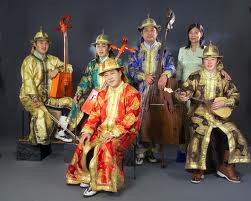- info@margadgobitour.com
- (+976) 9901-2659

Long song: The Long drawn song is a central element of the traditional Music of Mongolia. This genre is called "Long song" not because the songs are long (even if some of them are), but because each syllable of text is extended for a long duration. A four-minute song may only consist of ten words. Lyrical themes vary depending on context; they can be philosophical, religious, romantic, or celebratory, and often use horses as a symbol or theme repeated throughout the song. Eastern Mongols typically use a Morin khuur as accompaniment, sometimes with a type of indigenous flute, called limbe. Three major styles are identified in long songs: besreg urtiin duu ("mini long song"), urtiin duu and aizam urtiin duu ("majestic long songs"). Again, the styles reflect the way of the performance of the shuranhai and other techniques rather than the sizes of the songs.
Short song: Short songs are another type of Mongolian song. Not as spectacular or ancient as khoomii, and long songs and technically not as complex as the latter, but still performing them requires having a trained voice and good rhythm. Short songs are generally very upbeat.
Ode (Magtaal): Is another form of song that continued to play an important role in Mongol life. It is a poetic praise, an epic-like hymn with its origins in shamastic poetry. Dedicated to the scared mountains to a powerful wrestler, or to a victories horse, it is performed at all the important events of nomadic life. No naadam worthy of it s name would be without a magtaal.
Epic songs: Their must remarkable epics are those of Geser and Jangar which are transmitted by bards in a sung versified form sometimes accompanied by a morin huur, tovshuur, and by khoomii throat song.
Khoomii: Is the most spectacular and probably the oldest form. Known as khoomii in Mongolia. it's a vocal technique by which a single performer can produce two or even three separate lines simultaneously. The notes are continued and low made by forcing air through a constricted throat and a series of harmonies made by the tongue which, rolled under the palate, guages the breath, producing sounds remarkable similar to those of a flute. The vocal imitation of the flute and the Jew's harp was traditionally the exclusive province of men.
National dance: The "Bielgee" dance is particular to the people of western Mongolia. It is performed to the music of Mongolian national musical instruments, such as the morin khuur (horsehead fiddle) and the yochin (similar to the xylophone.) Bielgee is traditionally performed on the rather limited space before the hearth, so the dancers make practically no use of their feet. Instead, the dancers principally use only the upper part of their bodies, and through their rhythmic movements express various aspects of their identities, such as sex, tribe, and ethic group. Our classical traditional dance is bielgee, is a particular to the people western Mongolia . It is performed to the music of Mongolian national musical instruments, such as the morin khuur (horse headed fiddle) and yochin.
Morin Khuur: The most popular instruments is the "Morin khuur" ( horse headed fiddle ). It is a square fiddle with the long, straight handle curved at the tip and topped with the carving of a horse's head. It is said to represent the movement and sounds of a horse. Every Mongolian fmily strives to have a morin khuur in their ger even though they are hand-made and fairly expensive instruments. Twelve animals are carved on the neck in accordance with twelve years cycle of the lunar calendar. The morin khuur has two strings and bow made from the hair of horse's tail. At the top of the morin huur's neck is a horse's head, but here too, there are 5 other animals -horse, camel, cow, sheep and goat, Mongolian symbols of wealth and plenty.